Tu Nguyen
Tree-OPO: Off-policy Monte Carlo Tree-Guided Advantage Optimization for Multistep Reasoning
Sep 11, 2025Abstract:Recent advances in reasoning with large language models (LLMs) have shown the effectiveness of Monte Carlo Tree Search (MCTS) for generating high-quality intermediate trajectories, particularly in math and symbolic domains. Inspired by this, we explore how MCTS-derived trajectories, traditionally used for training value or reward models, can be repurposed to improve policy optimization in preference-based reinforcement learning (RL). Specifically, we focus on Group Relative Policy Optimization (GRPO), a recent algorithm that enables preference-consistent policy learning without value networks. We propose a staged GRPO training paradigm where completions are derived from partially revealed MCTS rollouts, introducing a novel tree-structured setting for advantage estimation. This leads to a rich class of prefix-conditioned reward signals, which we analyze theoretically and empirically. Our initial results indicate that while structured advantage estimation can stabilize updates and better reflect compositional reasoning quality, challenges such as advantage saturation and reward signal collapse remain. We propose heuristic and statistical solutions to mitigate these issues and discuss open challenges for learning under staged or tree-like reward structures.
Noise Contrastive Estimation-based Matching Framework for Low-Resource Security Attack Pattern Recognition
Jan 30, 2024
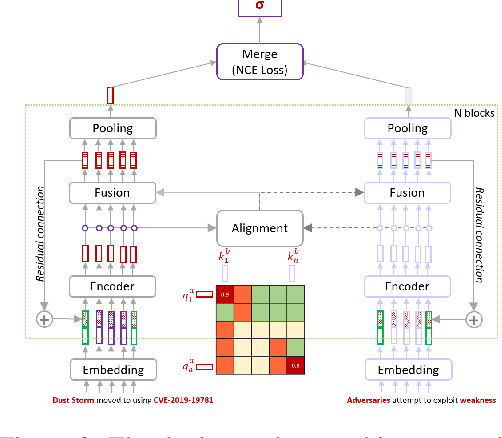
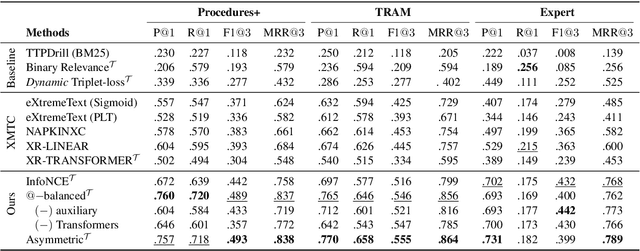
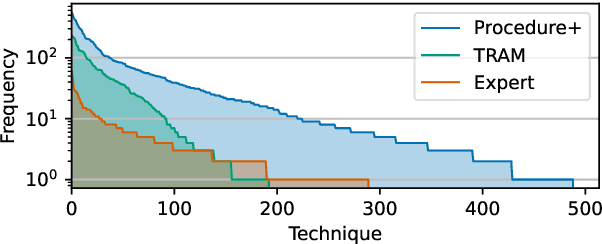
Abstract:Tactics, Techniques and Procedures (TTPs) represent sophisticated attack patterns in the cybersecurity domain, described encyclopedically in textual knowledge bases. Identifying TTPs in cybersecurity writing, often called TTP mapping, is an important and challenging task. Conventional learning approaches often target the problem in the classical multi-class or multilabel classification setting. This setting hinders the learning ability of the model due to a large number of classes (i.e., TTPs), the inevitable skewness of the label distribution and the complex hierarchical structure of the label space. We formulate the problem in a different learning paradigm, where the assignment of a text to a TTP label is decided by the direct semantic similarity between the two, thus reducing the complexity of competing solely over the large labeling space. To that end, we propose a neural matching architecture with an effective sampling-based learn-to-compare mechanism, facilitating the learning process of the matching model despite constrained resources.
Enabling hand gesture customization on wrist-worn devices
Mar 29, 2022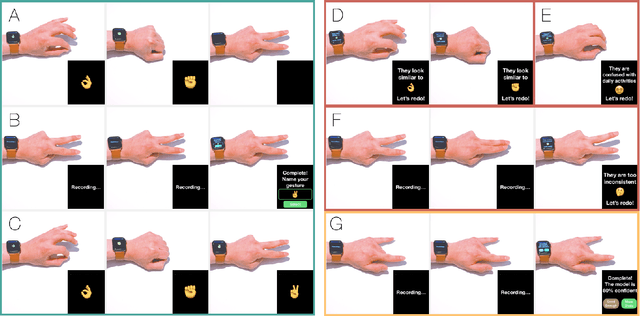
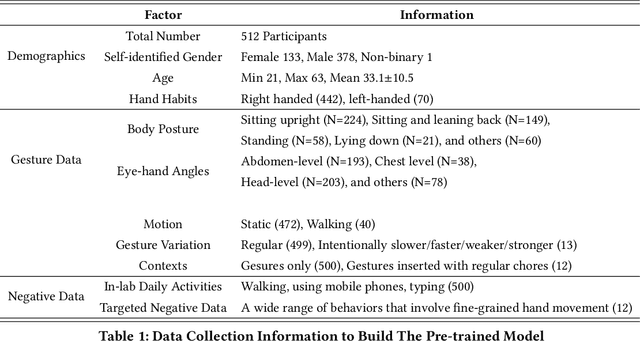
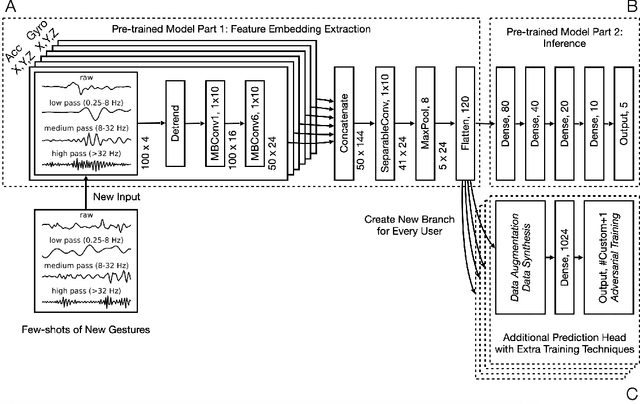
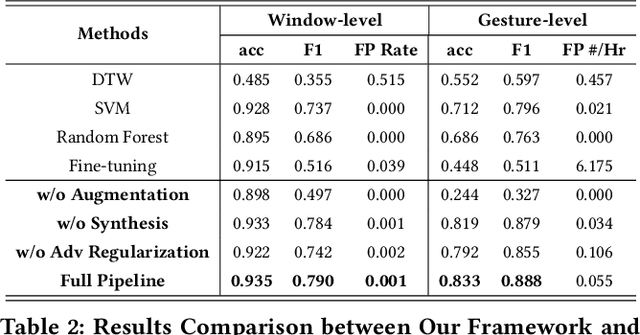
Abstract:We present a framework for gesture customization requiring minimal examples from users, all without degrading the performance of existing gesture sets. To achieve this, we first deployed a large-scale study (N=500+) to collect data and train an accelerometer-gyroscope recognition model with a cross-user accuracy of 95.7% and a false-positive rate of 0.6 per hour when tested on everyday non-gesture data. Next, we design a few-shot learning framework which derives a lightweight model from our pre-trained model, enabling knowledge transfer without performance degradation. We validate our approach through a user study (N=20) examining on-device customization from 12 new gestures, resulting in an average accuracy of 55.3%, 83.1%, and 87.2% on using one, three, or five shots when adding a new gesture, while maintaining the same recognition accuracy and false-positive rate from the pre-existing gesture set. We further evaluate the usability of our real-time implementation with a user experience study (N=20). Our results highlight the effectiveness, learnability, and usability of our customization framework. Our approach paves the way for a future where users are no longer bound to pre-existing gestures, freeing them to creatively introduce new gestures tailored to their preferences and abilities.
On the Feasibility of Predicting Questions being Forgotten in Stack Overflow
Oct 29, 2021
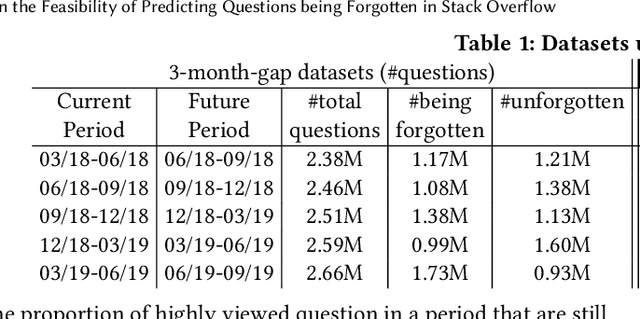
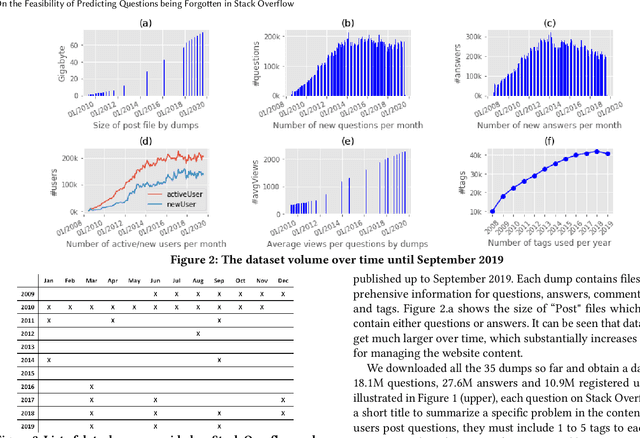

Abstract:For their attractiveness, comprehensiveness and dynamic coverage of relevant topics, community-based question answering sites such as Stack Overflow heavily rely on the engagement of their communities: Questions on new technologies, technology features as well as technology versions come up and have to be answered as technology evolves (and as community members gather experience with it). At the same time, other questions cease in importance over time, finally becoming irrelevant to users. Beyond filtering low-quality questions, "forgetting" questions, which have become redundant, is an important step for keeping the Stack Overflow content concise and useful. In this work, we study this managed forgetting task for Stack Overflow. Our work is based on data from more than a decade (2008 - 2019) - covering 18.1M questions, that are made publicly available by the site itself. For establishing a deeper understanding, we first analyze and characterize the set of questions about to be forgotten, i.e., questions that get a considerable number of views in the current period but become unattractive in the near future. Subsequently, we examine the capability of a wide range of features in predicting such forgotten questions in different categories. We find some categories in which those questions are more predictable. We also discover that the text-based features are surprisingly not helpful in this prediction task, while the meta information is much more predictive.
Spatiotemporal Tile-based Attention-guided LSTMs for Traffic Video Prediction
Oct 27, 2019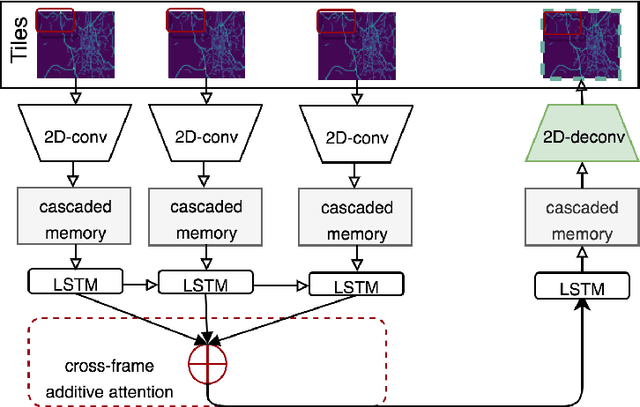
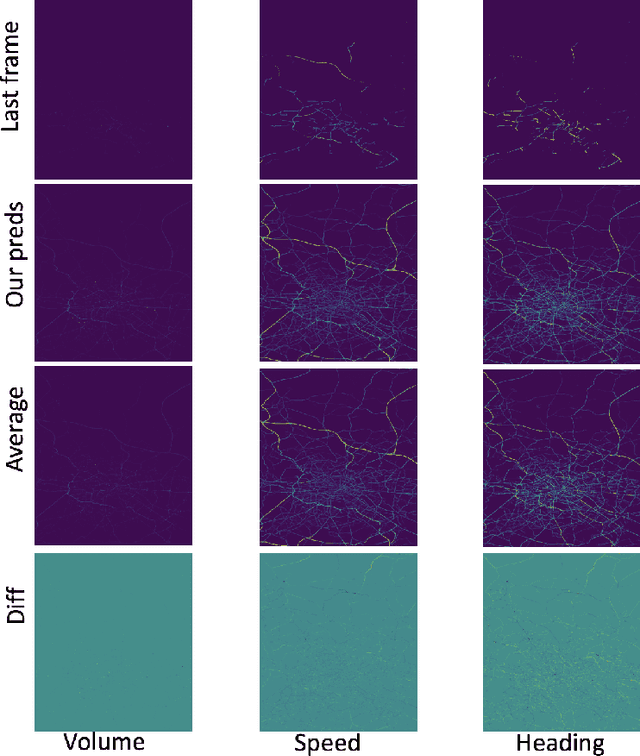
Abstract:This extended abstract describes our solution for the Traffic4Cast Challenge 2019. The key problem we addressed is to properly model both low-level (pixel based) and high-level spatial information while still preserve the temporal relations among the frames. Our approach is inspired by the recent adoption of convolutional features into a recurrent neural networks such as LSTM to jointly capture the spatio-temporal dependency. While this approach has been proven to surpass the traditional stacked CNNs (using 2D or 3D kernels) in action recognition, we observe suboptimal performance in traffic prediction setting. Therefore, we apply a number of adaptations in the frame encoder-decoder layers and in sampling procedure to better capture the high-resolution trajectories, and to increase the training efficiency.
 Add to Chrome
Add to Chrome Add to Firefox
Add to Firefox Add to Edge
Add to Edge